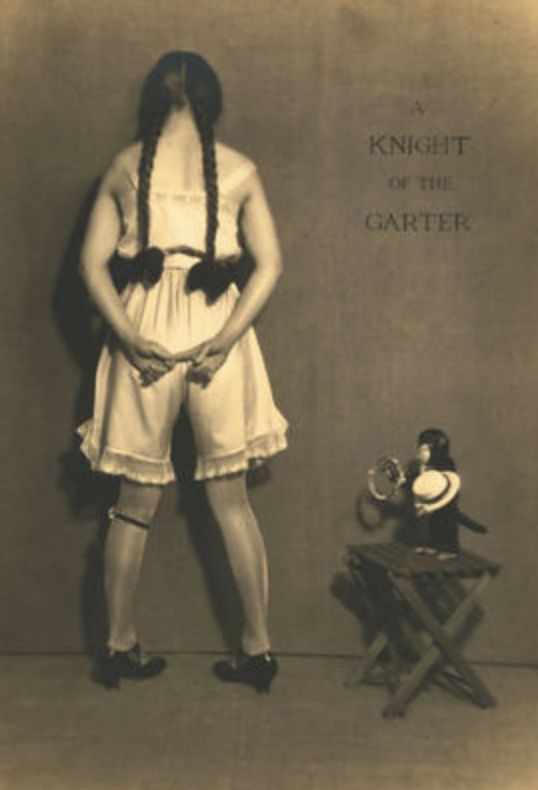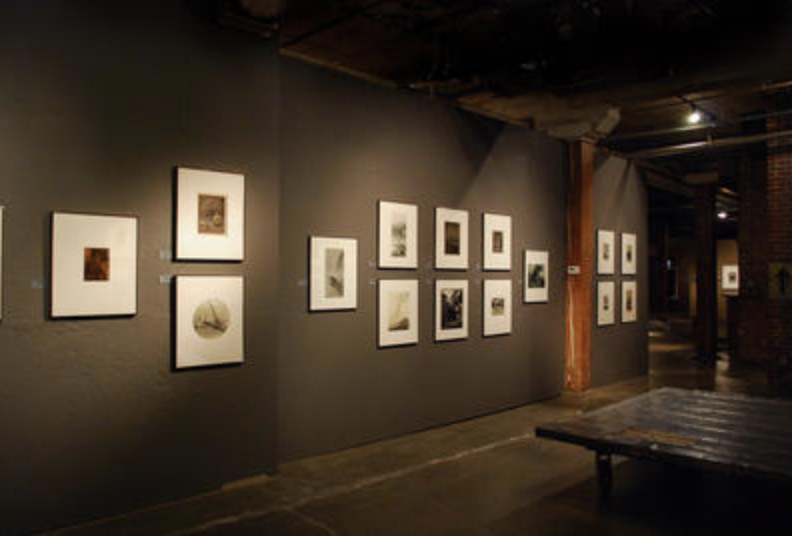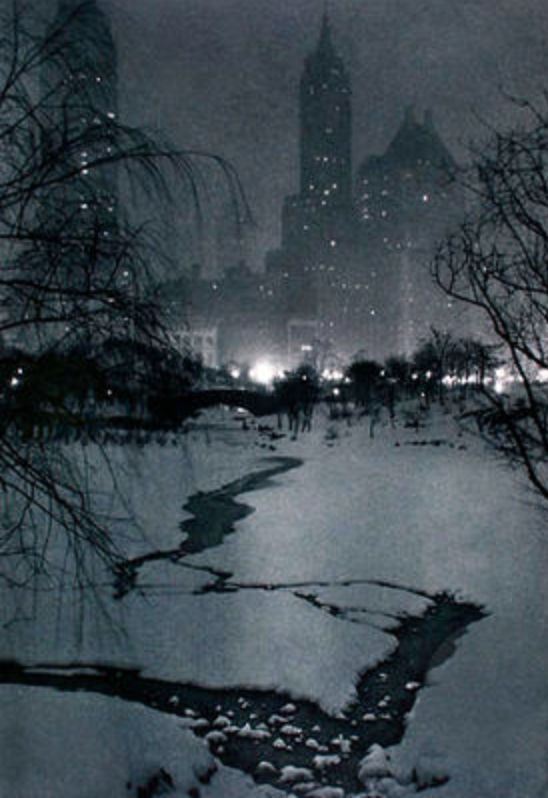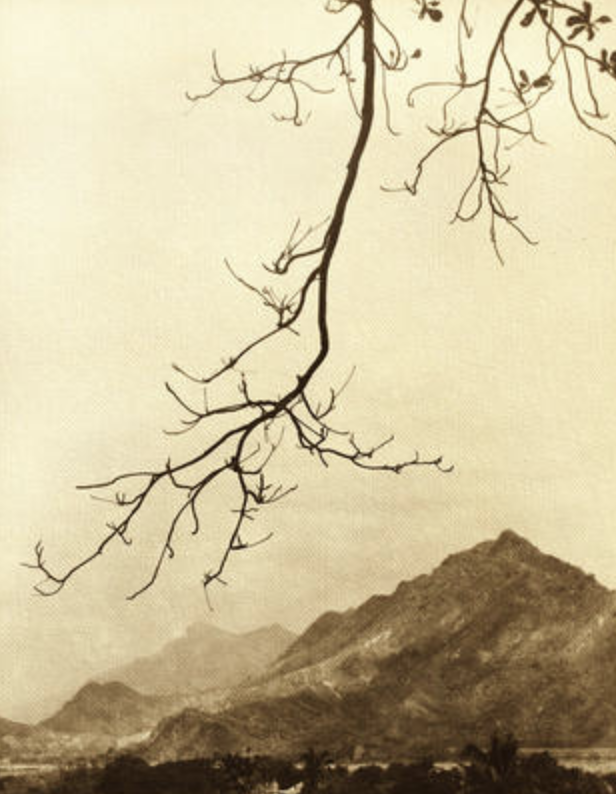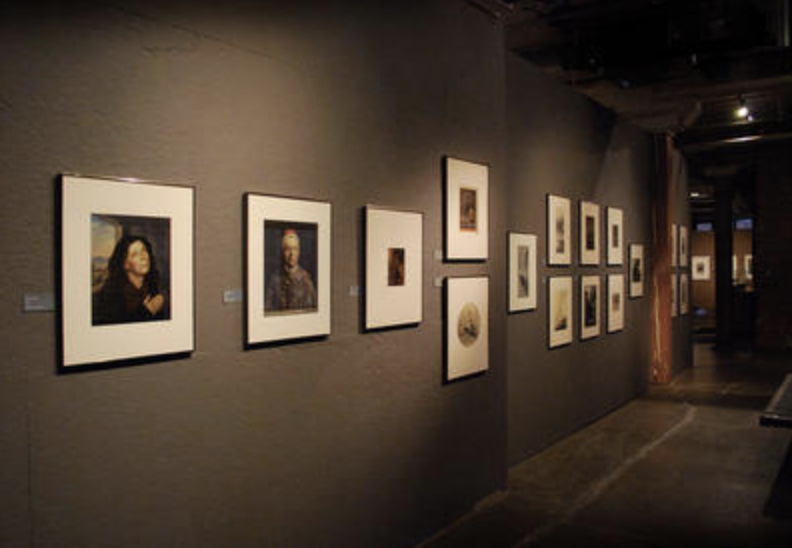A Pictorial Aesthetic
November 20, 2009 - January 2, 2010
The Pictorial Aesthetic: Selections from the Collection of the Photographic Society of America highlighted a broad range of imagery produced by the medium's earliest recognized artists. A variety of photographic print processes were represented including albumen, gum bichromate, platinum and metalchrome.
The Photographic Society of America (PSA) was founded in 1934 to promote the art and science of photography. It’s collection of over 4000 photographic prints, maintained in Oklahoma City at the international headquarters of the PSA, encompasses every process utilized by photographers since the invention of the medium and includes some of the rarest examples of photographic printmaking found anywhere. While the works in the collection cover a broad range of subjects, the dominant style represented is Pictorialism, an ‘aesthetic approach’ that placed more value on the artistic concerns of the photographer than the choice of subject. The movement was born in the mid-nineteenth century when photographers, disenchanted with the idea that photography held no artistic appeal, began to search for ways to make their work resemble other mediums like oil painting or charcoal drawing. Applying new techniques for altering their prints such as combining multiple negatives and utilizing alternative processes like gum bichromate or bromoil, they believed the effects had greater emotional impact and related to high art. Pictorialist works emphasized atmosphere in landscapes and a more defined viewpoint for portraiture that often drew upon narrative subject matter
terry winters: albums, folios, & suites
Albums, Folios and Suites: Prints by Terry Winters assembled an important series of prints produced between 1983 and 1997 by this internationally acclaimed American artist whose source for subject matter has long remained the natural sciences. On loan from the Belger Arts Center, Kansas City, the exhibit presented outstanding forays into the subtleties of printmaking processes including etching, aquatint, woodcut and linoleum block printing.
The works in this exhibition are on loan from the John and Maxine Belger Family Foundation, Kansas City. This important series of prints was produced between 1983 and 1997 by the internationally acclaimed American artist Terry Winters who graduated from the Pratt Institute in 1971 and pursued painting for ten years before beginning to exhibit his art. Influenced by the biomorphic-styled works of Arshile Gorky and Brice Marden, the source of Winters’ subject matter has long remained the natural sciences. Winters actively began sketching botanical and architectural structures during the early 1980s and these notebooks became the foundation for the extensive suites, with obvious biological references, that comprise the content of this exhibition.
In the visual arts ‘suite’ denotes a grouping of works produced around a related theme, affording an artist the opportunity to expand upon a set of ideas or motifs within a given medium. By including selections from all of Winters’ suites this exhibit lets us explore the workings of the mind as well as the hand of the artist. Winters’ “overlapping concerns,” as he states it, are to integrate the more figurative drawings of his prints into the syntax of his abstract painting, and in this show we directly witness the stages in this effort. The exhibit begins with experiments in lithography and presents outstanding forays into the subtleties of various printmaking processes. Winters’ penchant for working in series, his love of mark making, and his treatment of technical materials as alchemical fodder make his work particularly well-suited for the complex art of printmaking and makes Winters one of the more respected practitioners of the medium today.
Read the review from the Oklahoman.

